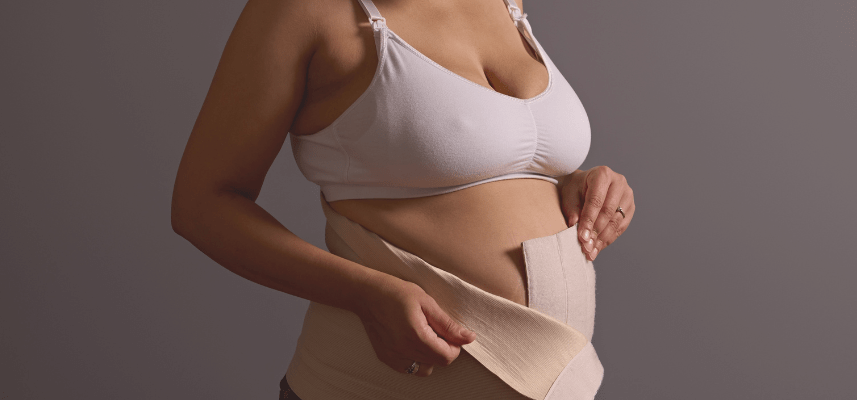Can you breastfeed with implants?
Does breast reduction surgery impact milk supply?
Are saline or silicone breast implants better for breastfeeding?
Should you wait to have breast surgery until after you’ve given birth?
These are all great questions. It is understandable that moms would want to know how breast surgery may impact their ability to breastfeed successfully. Take heart! It may be possible to breastfeed following surgery.
The choice is personal, and we want to equip you with current information to help you make the best decision for you and your baby.
Types of Cosmetic Breast Surgeries
Augmentation and reduction surgeries are a cosmetic procedure that comes in many different forms: breast rejuvenation, implant removals, augmentation, and reduction. In this blog, we address the breastfeeding considerations for two types: reduction mammoplasty and breast implants. Our hope is that moms feel armed with the information they need to move forward with their breastfeeding goals.
What is Reduction Mammoplasty?
Breast reduction surgery, or reduction mammoplasty, is a procedure that reduces the size of a woman's breasts. This is typically completed as an outpatient procedure with few complications.
Women with large breasts may elect this surgery to alleviate discomfort caused by the strain of the weight of their breasts. Pain can be felt in the neck, shoulders, and back, and some women even suffer from poor posture, herniated disks, negative body image, self-consciousness, and constant or persistent headaches.
Shifting trends are also behind the latest wave of increased reduction mammoplasty procedures. Women who chose implant surgery are now considering removing or reducing the size of the implants in favor of a more proportionate or natural appearance.
The removal of natural breast tissue or the removal of an implant are very different procedures and can have significantly different outcomes. An explant surgery—the removal or reduction of a breast implant—is often done when the implant has leaked or created significant health issues. This, of course, brings a host of body detox and similar problems for a woman to address before she can get pregnant. However, once she’s healthy—barring any other complications—she should be able to get pregnant and breastfeed as usual.
For moms who have had a breast reduction—a removal of the natural tissue—breastfeeding after breast reduction surgery is possible but very difficult, and success can be as low as 4%, depending on the surgical technique.
Breastfeeding After Breast Reduction
Breast reduction surgery is a significant medical intervention aimed at alleviating physical and psychological discomfort associated with overly large breasts. There are three standard techniques for breast reduction: Liposuction, Vertical (Lollipop) breast reduction, and Inverted T (Anchor) breast reduction. Each method has unique characteristics and implications for post-operative recovery, including the ability to breastfeed. Here's an overview of each technique and its impact on breastfeeding:
Liposuction-Only Breast Reduction
Liposuction-only breast reduction is a less invasive method that involves removing breast fat through suction using small incisions. This technique is best suited for patients who require a mild to moderate reduction in breast size and whose primary concern is fatty tissue rather than excess skin or glandular tissue.
Impact on Breastfeeding:
- Breastfeeding Feasibility: Since liposuction primarily targets fat tissue and involves fewer incisions, it generally preserves the nipple and areola’s anatomical and nerve integrity better than other methods. This preservation can maintain lactational abilities because less glandular tissue is disturbed.
- Considerations: Despite its advantages in preserving breastfeeding functionality, liposuction might not provide sufficient reduction for women with significant glandular tissue or those who require major reshaping and lifting.
Vertical (Lollipop) Breast Reduction
This method involves incisions around the areola and vertically down to the breast crease, forming a lollipop shape. It is designed for moderate reductions and reshaping, making it suitable for women with moderate sagging and larger breasts that do not require extensive skin removal.
Impact on Breastfeeding:
- Breastfeeding Feasibility: The vertical reduction technique might affect breastfeeding more than liposuction because it involves cutting through more glandular tissue and ducts to remove both skin and fat. However, it generally attempts to preserve the nipple-areola complex as a pedicle (attached segment), which helps maintain some breastfeeding capability.
- Considerations: Damage to milk ducts and nerves can occur, potentially reducing milk supply or the ability to breastfeed effectively. The degree of impact can vary widely among individuals.
Inverted T (Anchor) Breast Reduction
This traditional and most common method involves an anchor-shaped incision that circles the areola, extends vertically to the breast crease, and continues horizontally along the crease. This extensive approach is preferred for significant reductions and for patients with considerable sagging and excess skin.
Impact on Breastfeeding:
- Breastfeeding Feasibility: The anchor technique is more likely to impact breastfeeding negatively than the other methods due to the extensive incisions and removal of significant amounts of glandular tissue and ducts.
- Considerations: This technique often involves repositioning the nipple-areola complex, which can sever many milk ducts. Compared to others, this technique has a higher potential for complete loss of breastfeeding ability.
With any of these surgeries, the biggest obstacle that impedes breastfeeding is the loss of nipple elasticity and feeling, which can prevent a good latch for feeding. Moms who want to breastfeed after breast reduction may also want to monitor lactation capacity. It will be hard to gauge how much milk you are able to produce until you are actually lactating and breastfeeding your child.
Work with your lactation consultant to monitor and support you throughout your breastfeeding journey. And remember, every single drop of breast milk you can add to a baby's diet counts!
Breastfeeding with Breast Implants
Breast augmentation surgery remains one of the most popular cosmetic procedures globally. As moms navigate these procedures and their breastfeeding journey, it’s essential to understand how the surgery and implant materials can impact breastfeeding.
Below is a collection of FAQs about breastfeeding with implants, with sound advice from plastic surgeons.
Can you breastfeed if you have implants?
Yes, most likely. You should consider several things, including the type and location of the incision and the placement of breast implants. There is also potential for decreased milk production and concern about silicone or saline leaking into breast milk. We share more information about this below.
Can a saline or silicone implant leak into my milk supply?
There are two main types of implants used for breast augmentation procedures: saline and silicone gel. Your choice is determined by individual preference, implant size, breast size, shape, body type, and frame.
The FDA has stated that, at this time, it is not known if a small amount of silicone may pass through from the breast implant silicone shell into breast milk during breastfeeding (because there are currently no established methods to detect silicone levels in breast milk accurately).
The CDC does state that it considers it safe for mothers to breastfeed with breast implants, noting there have been “no recent reports of clinical problems in infants of mothers with silicone breast implants.”
Some additional context: silicone implants are now made of memory or cohesive gel, and the silicone is not easily moved. Instead, the gel sticks together, preventing it from entering the milk supply. The gel also makes it difficult to notice a rupture. This is known as a “silent rupture” and can be detected with an MRI. However, some instances of ruptured silicone breast implants may cause changes in the breast’s appearance, hard lumps over the implant or chest area, and changes in sensation that include swelling, numbness, pain, or tingling. Even in a ruptured implant, the gel typically doesn’t travel far and remains within the scar tissue around the breast implant.
Saline implants, on the other hand, are made up of salt water. If saline implants rupture, the contents are absorbed back into the body, which does not affect the breast milk. Moms will be able to tell if the saline implant has ruptured because the implant will deflate, losing its original size and shape. Sometimes, pain or discomfort may occur, alerting you to a potential rupture. You are encouraged to ask your breast surgeon to make recommendations for the best implant type based on your lifestyle and breastfeeding goals.
Can the location of the implant affect the ability to breastfeed?
Dr. Stephen Greenberg, a board-certified plastic surgeon, notes that the location of an implant has everything to do with a woman’s ability to breastfeed. An incision under the breast crease, instead of a nipple incision, is more favorable for breastfeeding. Nipple incisions run the risk of possibly damaging the milk ducts or nerves around the nipple. This can impact milk production and cause nipple pain or make the nipple overly sensitive, making it uncomfortable or challenging to breastfeed.
Placement of the implant under the chest wall muscle also seems to be more favorable for breastfeeding. The less pressure an implant puts on mammary glands, the better the chance of milk production. Check with your plastic surgeon to determine the best implant placement for you.
Pumping with Implants
Mothers with breast implants should know there is no evidence that pumping will break an implant; working with a lactation consultant to ensure mom is using the correct flange to avoid skin irritation, as well as helping mom develop a pumping schedule based on their needs, will be important. The Aeroflow team can help mom determine the best pump to use!
Armed With Information
New moms face various considerations when deciding to have breast surgery. If you are considering cosmetic surgery, you have time to consider how breast surgery might impact your breastfeeding experience. Remember, recovery will look different for every surgical procedure and with every mom. Speak to your surgeon, lactation consultant, and healthcare providers to help you prepare for your breastfeeding journey after surgery.
Feel free to contact Aeroflow healthcare with any additional questions at 844-867-9890. Not sure if you qualify for a breast pump through insurance? We can help! Fill out this form, and we’ll get in touch. We look forward to hearing from you.
References
https://www.statista.com/topics/3734/cosmetic-surgery/#topicOverview
https://www.ncbi.nlm.nih.gov/pmc/articles/PMC5648284/
https://www.fda.gov/medical-devices/breast-implants/risks-and-complications-breast-implants#Impact
https://www.fda.gov/medical-devices/breast-implants/risks-and-complications-breast-implants
https://www.fda.gov/medical-devices/breast-implants/risks-and-complications-breast-implants
https://researchers.mgh.harvard.edu/profile/3732030/Steven-Greenberg
https://www.ncbi.nlm.nih.gov/pmc/articles/PMC5648284/








